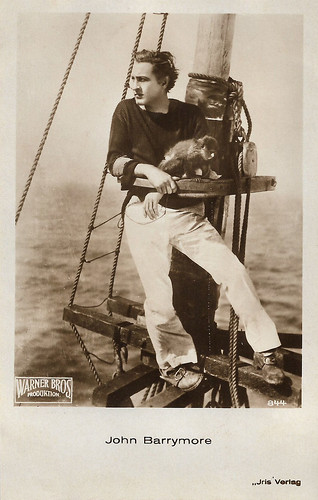
Austrian postcard by Iris Verlag, no. 844. Photo: Warner Bros. Produktion. John Barrymore in The Sea Beast (Millard Webb, 1926), based on 'Moby Dick' by Melville.

British postcard in the Famous Cinema Stars Series by Beagles Postcards, no. 178.U. Photo: Warner Bros.
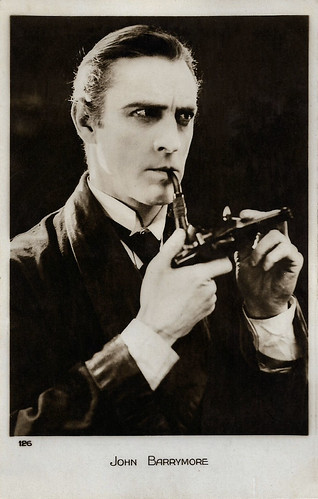
French postcard by Cinémagazine-Edition, Paris, no. 126. John Barrymore in Sherlock Holmes (Albert Parker, 1922).
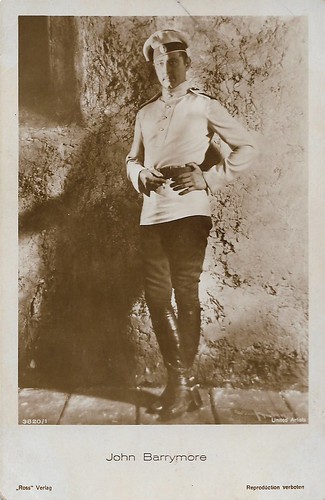
German postcard by Ross Verlag, no. 3820/1. Photo: United Artists. John Barrymore in Tempest (Sam Taylor, 1928).
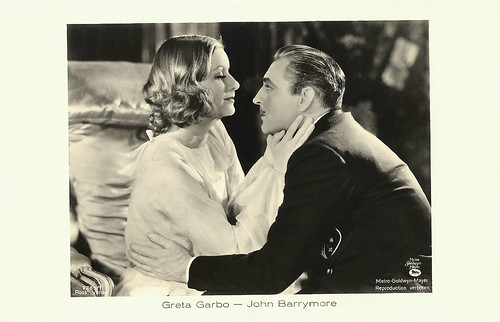
German postcard by Ross Verlag, no. 7285/1, 1932-1933. Photo: Metro-Goldwyn-Mayer. Greta Garbo and John Barrymore in Grand Hotel (Edmund Goulding, 1932).
His generation's most acclaimed Hamlet
John Barrymore was born John Sidney Blyth in 1882 in Philadelphia, Pennsylvania. His father was Maurice Blyth (or Blythe; family spellings vary), a stage success under the name Maurice Barrymore. His mother, Georgie Drew, was the daughter of actor John Drew. Although well known in the theatre, Maurice and Georgie were eclipsed by their three children, John, Lionel Barrymore, and Ethel Barrymore, each of whom became legendary stars.
John was handsome and roguish. He made his stage debut at age 18 in one of his father's productions but was much more interested in becoming an artist. Briefly educated at King's College, Wimbledon, and at New York's Art Students League, Barrymore worked as a freelance artist and for a while sketched for the New York Evening Journal.
Gradually, though, the draw of his family's profession ensnared him, and by 1905, he had given up professional drawing and was touring the country in plays. He survived the 1906 San Francisco earthquake, and in 1909, became a major Broadway star in 'The Fortune Hunter'.
In 1922, Barrymore became his generation's most acclaimed 'Hamlet', in New York and London. But by this time, he had become a frequent player in films. His screen debut supposedly came in An American Citizen (J. Searle Dawley, 1914), though records of several lost films indicate he may have made appearances as far back as 1912.
During the silent film era, he was well received in such pictures as Dr. Jekyll and Mr. Hyde (John S. Robertson, 1920), Sherlock Holmes (Albert Parker, 1922) with Roland Young as Dr. John Watson, and The Sea Beast (Millard Webb, 1926), the first adaptation of the novel 'Moby-Dick' by Herman Melville. Barrymore became every bit the star of films that he was on stage, eclipsing his siblings in both arenas.
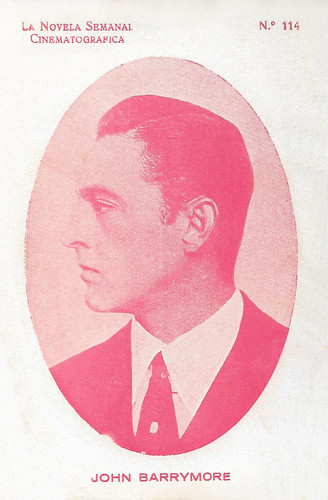
Spanish card by La Novela Semanal Cinematográfica, no. 114.

German postcard by Ross Verlag, Berlin, no. 55/2. Photo: Warner Bros./Bruckman Verleih. John Barrymore in The Sea Beast (Millard Webb, 1926), based on 'Moby Dick' by Herman Melville.

Vintage postcard. Photo: Warner Bros. John Barrymore in Don Juan (Alan Crosland, 1926).
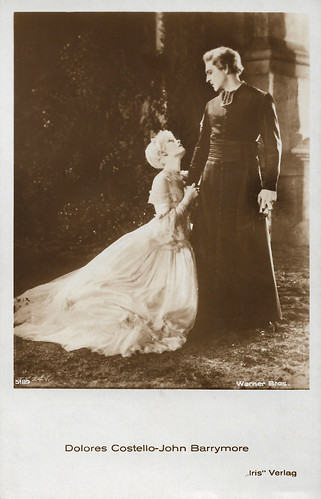
Austrian postcard by Iris Verlag, no. 5189. Photo: Warner Bros. / National. Dolores Costello and John Barrymore in When a Man Loves (Alan Crosland, 1927).
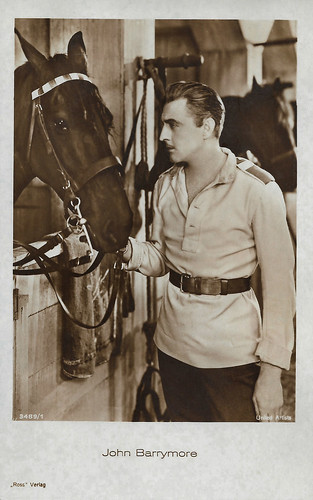
German postcard by Ross Verlag, Berlin, no. 3489/1, 1928-1929. Photo: United Artists. John Barrymore in Tempest (Sam Taylor, 1928).

German postcard by Ross Verlag, Berlin, no. 4931/2, 1929-1930. Photo: Warner Bros. / National. John Barrymore in General Crack (Alan Crosland, 1929).
Striking matinee idol looks
Though his striking matinee-idol looks had garnered him the nickname "The Great Profile", John Barrymore often buried them under makeup or distortion in order to create memorable characters of degradation or horror. He was a romantic leading man into the early days of talkies.
His stage-trained voice proved an asset when sound film was introduced. The three Barrymore siblings appeared in only one film together: Rasputin and the Empress (Richard Boleslawski, 1932). Lionel and John appeared without Ethel in Grand Hotel (Edmund Goulding, 1932), Arsène Lupin (Jack Conway, 1932), Night Flight (Clarence Brown, 1933), and Dinner at Eight (George Cukor, 1933).
His other big successes were the screwball comedies Twentieth Century (Howard Hawks, 1934) with Carole Lombard and Midnight (Mitchell Leisen, 1939) with Claudette Colbert and Don Ameche. John's heavy drinking since boyhood began to take a toll, and he degenerated quickly into a man old before his time.
He made a number of memorable appearances in character roles, but these became over time more memorable for the humiliation of a once-great star than for his gifts. His last few films were broad and distasteful caricatures of himself, though, in even the worst, such as Playmates (David Butler, 1941) with Kay Kyser and Lupe Velez, he could rouse himself to a moving soliloquy from 'Hamlet'.
John Barrymore died in 1942 in Los Angeles, mourned as much for the loss of his life as for the loss of grace, wit, and brilliance which had characterised his career at its height. Barrymore married and divorced four times. His wives were Katherine Corri Harris (1910-1917), Blanche Oelrichs (1920-1928), Dolores Costello (1928-1935), and Elaine Barrie (1936-1940). He was the father of John Drew Barrymore and Diana Barrymore, and the grandfather of Drew Barrymore.
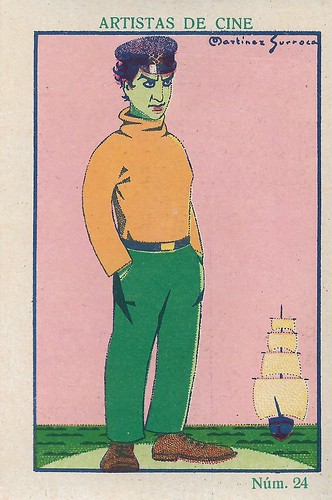
Spanish collectors card by Chocolates Amatller, Barcelona, in the 'Artistas de cine' series, no. 24: John Barrymore. Image: Martinez Surroca. The picture refers to the Moby Dick adaptation The Sea Beast (Millard Webb, 1926).
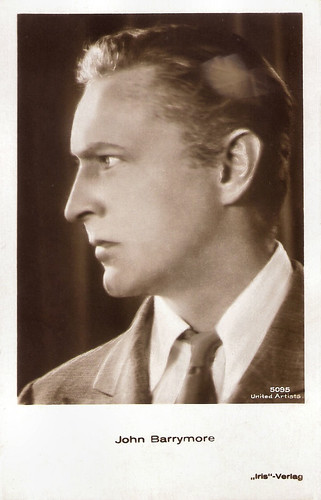
Austrian postcard by Iris-Verlag, no. 5095. Photo: United Artists.

German postcard by Ross Verlag, no. 4030/1, 1929-1930. Photo: United Artists. Camilla Horn and John Barrymore in Eternal Love (Ernst Lubitsch, 1929).
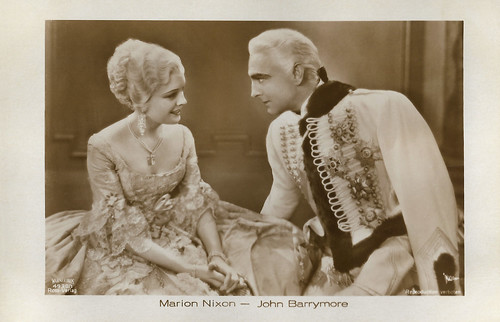
German postcard by Ross Verlag, no. 4930/1, 1930-1931. Photo: Warner Bros. / National. Marion Nixon and John Barrymore in General Crack (Alan Crosland, 1929).

German postcard by Ross Verlag, no. 160/4. Photo: Metro-Goldwyn-Mayer. Lionel Barrymore, Joan Crawford and John Barrymore in Grand Hotel (Edmund Goulding, 1932). Collection: Geoffrey Donaldson Institute.
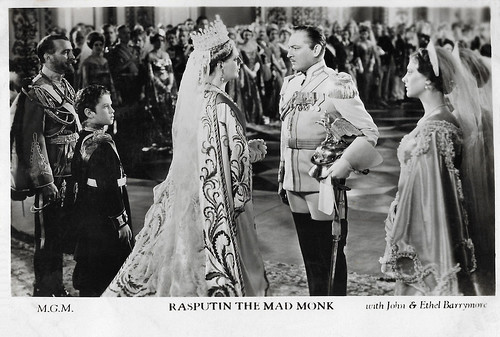
British postcard in The Film Shots Series by Film Weekly. Photo: M.G.M. (Metro-Goldwyn-Mayer). Ralph Morgan, Tad Alexander, Ethel Barrymore and John Barrymore in Rasputin and the Empress (Richard Boleslavsky, 1932).
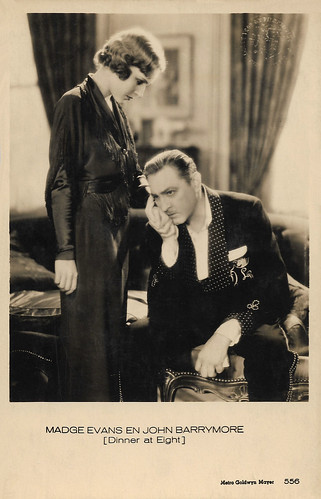
Dutch postcard, no. 556. Photo: M.G.M. Madge Evans and John Barrymore in Dinner at Eight (George Cukor, 1933).
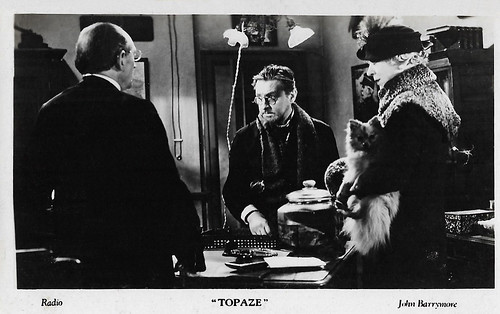
British postcard in the 'Filmshots' series by Film Weekly. Photo: RKO. John Barrymore in Topaze (Harry D'Abbadie D'Arrast, 1933).
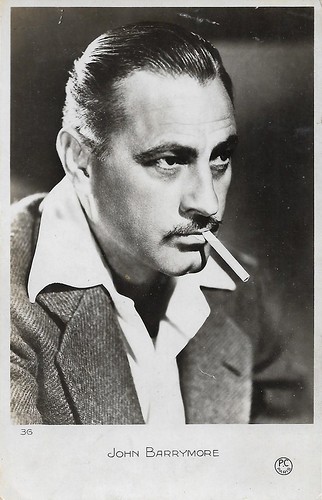
French postcard by P.C., Paris, no. 36.

French postcard by EC (Editions Chantal, Paris), no. 51 Photo: M.G.M.

Belgian collectors card by Nels Bromurite for Kwatta. Photo: RKO Radio.
Sources: Jim Beaver (IMDb), Wikipedia, and IMDb.
No comments:
Post a Comment